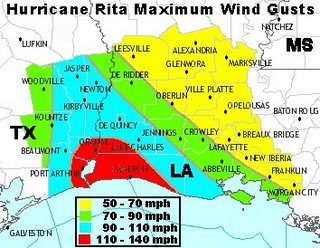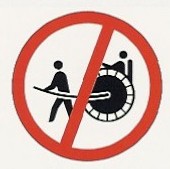
Will Alberto come calling this summer or fall? What about Beryl or Chris or Nadine or Tony? These are among the names for the 2006 Atlantic hurricanes. Nadine? Tony? Oh well, the names really don’t mean anything until they become real storms and make a major intrusion into your lives as Rita did in September 2005.
Here is the prediction for the 2006 hurricane season made in April by preeminent hurricane researcher, William Gray and his associate, Philip J. Klotzbach, both of Colorado State University:
“We estimate that 2006 will have about 9 hurricanes (average is 5.9), 17 named storms (average is 9.6), 85 named storm days (average is 49.1), 45 hurricane days (average is 24.5), 5 intense (Category 3-4-5) hurricanes (average is 2.3) and 13 intense hurricane days (average is 5.0).”
That sounds rather dismal. I have searched high and low for a prediction for the 2006 season by NOAA, of which the National Weather Service is a division, and cannot find one. Perhaps it was because of their prediction for the 2006 season:
“NOAA’s prediction for the 2005 Atlantic hurricane season is for 12 to 15 tropical storms, with seven to nine becoming hurricanes, of which three to five could become major hurricanes,” said retired Navy Vice Adm. Conrad C. Lautenbacher, Ph.D., undersecretary of commerce for oceans and atmosphere and NOAA administrator, at a May news conference.
As most of you know, it didn’t work out that way. There were a record 27 named storms, of which 15 were hurricanes, exceeding the 1969 record of 12 hurricanes, and 7 were major hurricanes. Of the 7 major hurricanes, an unprecedented 4 reached category 5 status, also according to NOAA.

I’m not faulting anyone. Guessing what will happen during hurricane season is a little more exact than shooting craps. I hear a lot of people around these parts — Southeast Texas — who fear we will have another bad hurricane season. I guess people have a right to worry after Rita.
On a more personal level, I suppose the question for me was the same one I asked just before Rita came blowing ashore — the old Clash question: Should I stay or should I go?

It turned out that Rita blew with about the same force here in Beaumont as it did in Newton County, to the northeast and next to the Texas-Louisiana state line. My apartment complex in Beaumont sustained very minimal damage. My brother’s home, where I rode out the storm, also did not suffer damage but he had six large trees that were blown down in his yard by Rita. And his shop, the first house I lived in as a child, had a large oak fall on it, damaging the roof.
But you know what they say about hindsight. It’s what keep horses from betting on people. No. Wait. That’s what they say about common sense, or at least what I read once in “Mad” magazine.
It is definitely not too early to be thinking about such matters as evacuating in the event another hurricane decides to strike the area. But I didn’t make a decision about evacuating because of Rita until the day I left. Should the unthinkable happen again, I can’t be sure my decision will not have similar timing.







